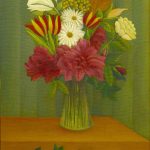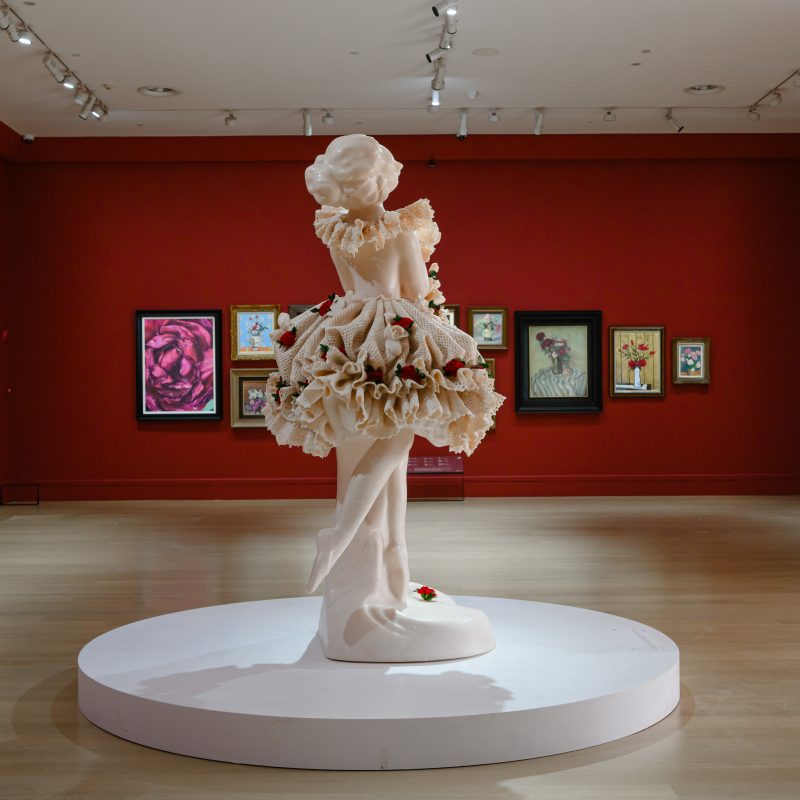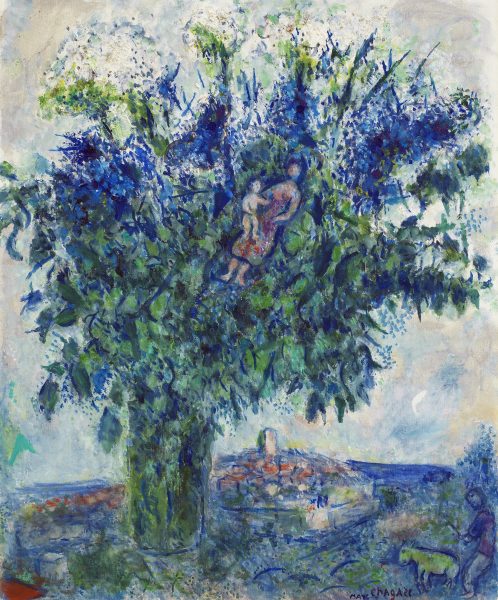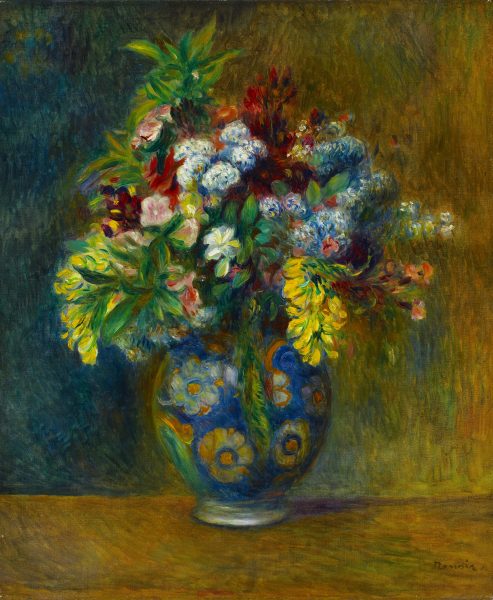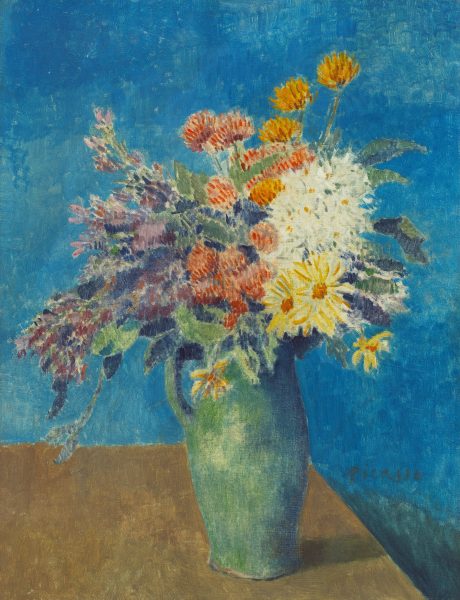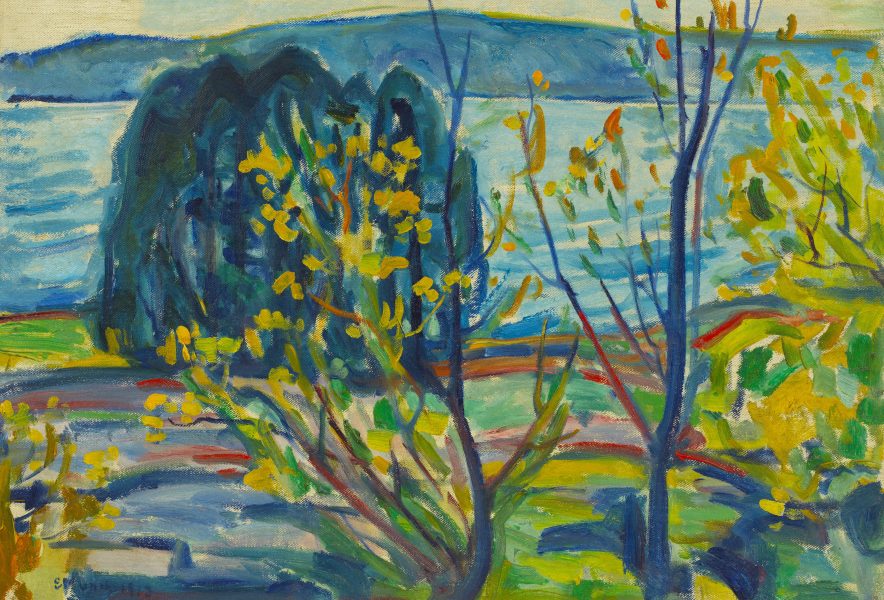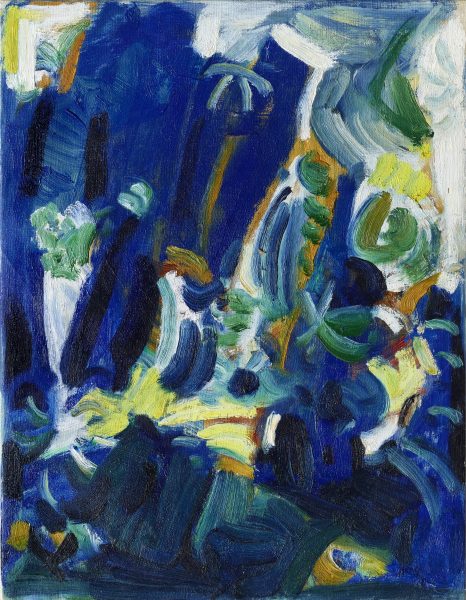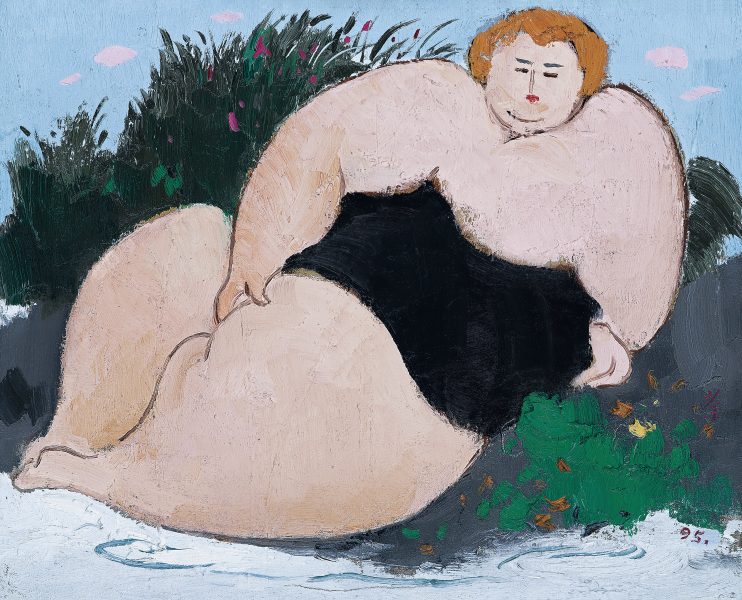Vase de Fleurs à la Branche de Lierre, Première Version
Henri Rousseau
1901-1902
- Medium:Oil on canvas
- Year:1901-1902
- Size:46.4 × 33 cm
Description
Henri Rousseau worked for the customs in his early years, painting only in his spare time, and it was not until his retirement at the age of 49 that he devoted himself fully to art. With his self-taught naïve style and jungle scenes teeming with exotic flora and fauna, he became a central figure of both Naïve Art and Primitivism. Rousseau never once left France; much of his inspiration came instead from popular book illustrations and his observations in the Jardin des Plantes in Paris. Floral still lifes are extremely rare in his oeuvre, with only about ten examples currently known. Among them, Vase de fleurs à la branche de lierre, première version is regarded as a notable masterpiece. The roses, tulips, daisies, mimosas and lilies in the vase symbolise, respectively, longing, passion, purity, immortality and rebirth, while the ivy in the foreground—a recurring motif in his work—signifies fidelity and eternity. Beneath the quiet innocence of the composition lies a veiled expression of the artist’s inner sentiments concerning his two marriages. This painting was long on loan to the Museum of Modern Art, New York (MoMA), and was included in the museum’s 1942 Rousseau retrospective exhibition.



